Best professional camera 2024: the 12 best workhorses for pro creators
The best professional cameras for photographers and videographers
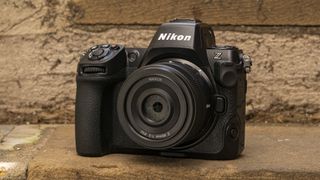
1. The list in brief
2. Best hybrid
3. Best for photos
4. Best for detail
5. Best for speed
6. Best for sports & wildlife
7. Best for most pros
8. Best for video on a budget
9. Best medium format
10. Best photo quality
11. Best for journalists
12. Best for computational modes
13. Best value 6K video camera
14. How to choose
15. How we test
With an abundance of incredible cameras designed specifically for pros, including DSLRs, mirrorless cameras, and medium-format options, it can be a challenge to know where to start. The fact that most models cost a lot of money makes it even more important to buy the right one the first time around. This guide contains a set of rigorously tested professional cameras that will enable you to find the right professional camera for your individual working requirements.
Overall, the best option for most serious photographers is the mighty Nikon Z8. It’s not cheap, but shelling out secures you a high-spec hybrid powerhouse with a 45.7MP sensor, rapid burst shooting, and 8K/30p video skills. If it's a DSLR that you're after, then the Nikon D850 is a modern classic that delivers great performance when shooting weddings, landscapes, portraits, action, or wildlife, while Sony and Canon have some superb options for action shooters such as the A9 III and EOS 1D X Mark III, plus Panasonic offers the best bang for buck for indie filmmakers with its Lumix S5 II / S5 IIX.
Whatever your budget and professional focus, you’ll find an ideal option below. Our guide receives regular updates to make sure we're including all the best options available right now. Each product contains a set of specs, a brief summary, and a couple of reasons to buy it or not. If you're still stuck on how to proceed, scroll to the bottom and read our expert buying advice.

Tim is TechRadar's Cameras editor, with over 15 years in the photo video industry and most of those in the world of tech journalism, Tim has developed a deeply technical knowledge and practical experience with all things camera related, and has personally tested many of the cameras in this guide for TechRadar, some of which he's also used for numerous professional assignments.
The quick list
If you want a shortcut to the best professional cameras, our quick summary below will give you an overview of the top options for every budget. When you find one that fits the bill, use the links beneath to jump down to our full write-up.
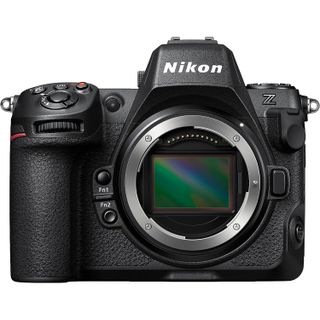
Best hybrid
An incredible cutting-edge 45.7MP sensor packed into a smaller body than the Z9. Unbelievable image quality and low noise levels.
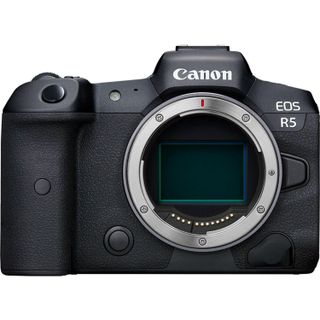
Best for photos
Despite not being the best for video, this camera is the best stills camera that Canon has on the market right now.
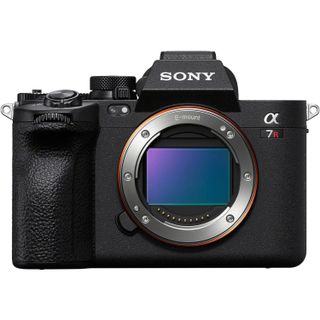
Best for detail
Unbelievably good-quality stills with high levels of detail are guaranteed thanks to the 61 MP sensor and supremely powerful processor.
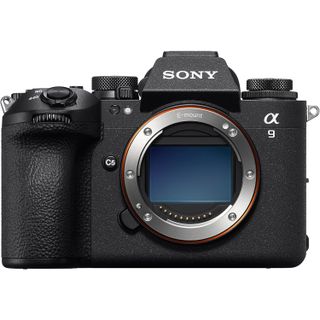
Best for speed
Arguably the best mirrorless camera for high-speed shooting, all made possible by a global shutter and fastest-ever burst shooting mode.
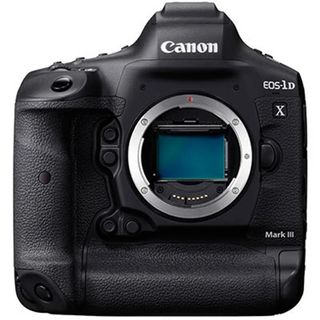
Best DSLR for sports & wildlife
Subject tracking makes it possible to set the camera to focus on people regardless of what else is in the frame at that point in time.
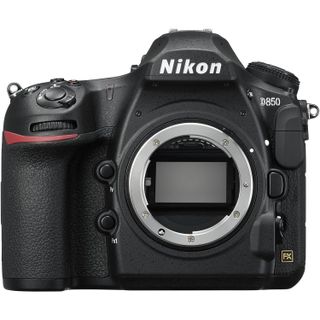
Best DSLR for most pros
With an unbelievably strong build and impressive performance, the Nikon D850 delivers on almost every single front.
Load the next 6 products...
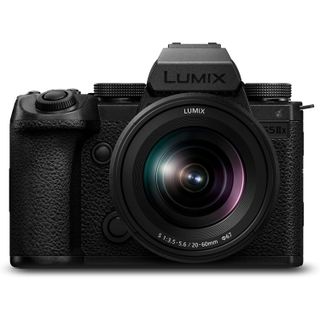
Best for video on a budget
Unmatched 6K 30p recording with excellent image stabilization for the value price of $1,999 / £1,999 / AU$2,989 body-only.
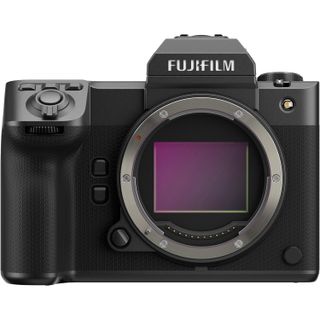
Best medium format
Better than all the competition, the GFX100 II delivers ultra-high resolution images and incredible performance.
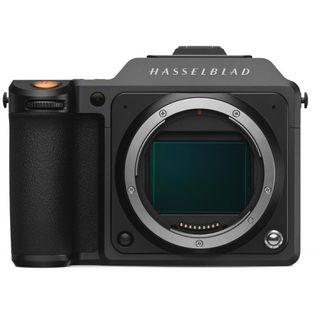
Best photo quality
With a game-changing sensor and a resolution of 100MP this medium format camera offers some of the best photo quality around.
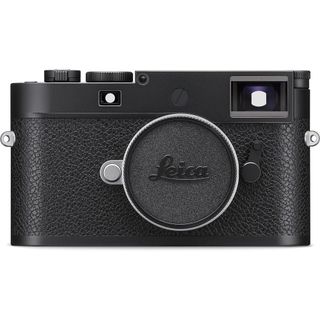
Best for journalists
With content credentials built-in, the M11-P helps to assert digital rights and deliver authenticity to any media captured by it.
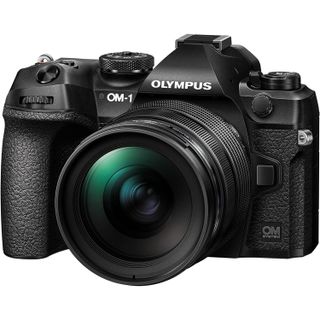
Best for computational modes
Photo resolution can be increased all the way up to 80 MP and produce sharp shots, but only for still subjects.
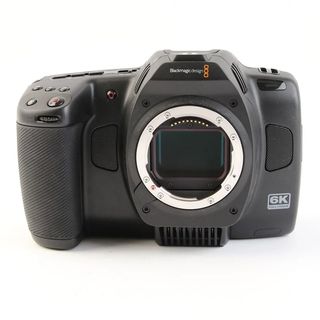
Best value 6K video camera
Experienced filmmakers will love its raw footage capabilities, streamlined workflow, and amazing low-light abilities.
The best professional cameras in 2024
Why you can trust TechRadar
Below you'll find full write-ups for each of the best professional cameras in our list. We've tested each one comprehensively, so you can be sure that our recommendations can be trusted.
The best hybrid professional camera
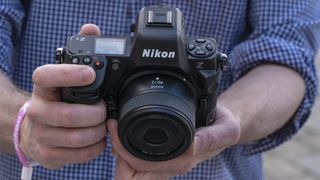
Specifications
Reasons to buy
Reasons to avoid
✅ You want a great generalist: The Z8 shoots everything well; landscapes, portraits, wildlife, and even sports.
✅ You photograph aeroplanes: The built in airplane subject tracking mode automates this oftentimes fiddly process.
❌ You rely on image stabilization: The Z8 has it but it is average at best and can't always be relied on.
❌ Resolution is everything: 45MP is great but falls short of the 60MP offered by its rivals.
The Nikon Z8 is one of the best cameras on the market at the moment. It has almost everything that the Z9 offers but comes in a smaller and lighter weight body, not to mention the cheaper price point. The 45.7MP resolution sensor delivers incredible image quality with low noise levels, even in low light. It's resolution is not as impressive as the Sony A7R V or the Leica M11 but it'll be more than enough for most pros. When paired with the Nikkor Z MC 105mm f/2.8 VR S lens we found the detail to be "pin-sharp".
A responsive autofocus system and 3D matrix tracking system means you'll never come up short when action is moving quickly. Face, eye, and animal detection takes all the guess work out of finding focus for these common subjects. This camera is great when capturing both photo and video but is susceptible to overheating during long recording sessions. All in, the Z8 is packed with almost every feature a pro could need.
- Read our in-depth Nikon Z8 review
The best professional camera for photos
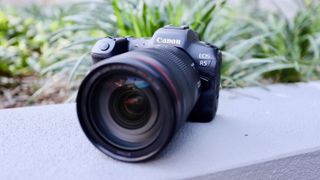
Specifications
Reasons to buy
Reasons to avoid
✅ You focus on photography: The EOS R5 is a powerful camera that can photograph, landscapes, wildlife and weddings.
✅ You rely on autofocus: With almost infallible eye-detection and subject tracking, you'll be amazed at the results.
❌ You shoot long videos: Overheating limitations can result in problems when do extended filming.
❌ You want a budget camera: At $3,899 / £4,199 / AU$6,899 you'll need to be very serious about your photography.
The bar was well-and-truly raised when the Canon EOS R5 was launched. Boasting 8K video, a 45MP resolution, up to 20fps burst shooting, an EVF with 5.76-million dots, and a 3.2-in fully articulating touchscreen, the R5 crammed all of this into a body that weighs a mere 650g. It all read like an unrealistic wishlist. Too good to be true? For the best part, the EOS R5 well and truly delivers. This is Canon's most competent mirrorless camera for photography. The high-resolution sensor is well supported by an incredibly effective autofocus system, while its competitive 12fps continuous shooting is gobbled up by the powerful DIGIC X processor.
Then there is 8K video recording, not found on any other camera at this price point. Video image quality is incredibly sharp, complemented by easily graded color profiles and Canon's first in-body image stabilization (IBIS) system. There is one well-reported caveat; overheating with lengthy cooling down periods. Consequently, 8K video recording time is limited and therefore unusable for heavy-use pros. However, 4K video recording fares better, even if there is still a video recording cap.
- Read our in-depth Canon EOS R5 review
The best professional camera for detail
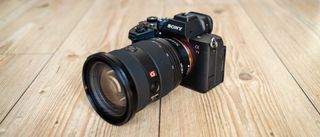
Specifications
Reasons to buy
Reasons to avoid
✅ You shoot low-light a lot: With usable results up to ISO 25,600 it's amazing what this camera is capable of.
✅ You need high resolution: The 61MP sensor produces some of the highest resolution and most detailed images from any camera.
❌ You don't have Sony's lenses: The higher resolution sensor means you must have Sony's best G and GM range lenses.
❌ You need 8K slow-mo: Slow-mo is only offered at 4K at 60fps. A different camera will be needed for super slow-mo.
If pixels are paramount, the Sony A7R V should rank highly on your shortlist. The 61MP resolution of its full-frame sensor remains peerless among full-frame mirrorless cameras. Combined with an upgraded Bionz XR processing engine and high-end optics, it can capture vast amounts of detail for cropping flexibility, whether you’re shooting landscapes or studio portraits. It’s happy going handheld as well, with up to eight stops of image stabilization at its disposal. Its video chops are no less impressive: while the A7S III is a better choice for dedicated videographers, the A7R V can comfortably record pro-grade footage.
AF improvements make it more than just a numbers game, with AI-assisted subject recognition reliably outsmarting standard face- and eye-detection in our tests. It also borrows a 9.44-million dot EVF from the A7S III, while the 3.2-inch touchscreen is a fully articulating affair for framing versatility. Burst speeds are better elsewhere, but the main consideration is whether you’re willing to upgrade your glass: the A7R V’s capabilities are only fully realised when it’s paired with top-spec lenses.
- Read our in-depth Sony A7R V review
The best professional camera for speed
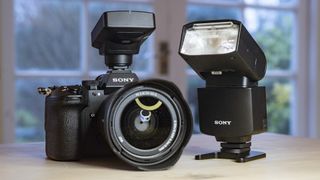
Specifications
Reasons to buy
Reasons to avoid
✅ You do fast moving shoots: With 120fps burst shooting and 1 second pre-capture, you'll never miss an important shot.
✅ You shoot in tough conditions: The A9 III is built to withstand a range of weather conditions.
❌ You want 8K video: The A9 III tops out at 4K which might be okay for most shoots but not all.
❌ You shoot in low-light: Global shutter results in noisier images as high ISO levels compared to rivals.
The standout feature of the Sony A9 III is most definitely it's global shutter, which enables up to 120 fps burst shooting. This industry-leading technology makes it possible to capture an incredible number of photos every second, guaranteeing you'll get the shot you need. This is clearly a game-changer for sports and wildlife photographers. It is only ever so slightly let down by the use of CFexpress Type A cards, which can result in the buffer taking some time to clear before regaining peak performance, by which point the action being captured might have finished.
The AI powered Bionz XR processor provides unbelievably good autofocus and industry-leading subject-tracking AF. Again, essential features when capturing fast moving subjects. The 24 MP photo and 4K video resolution won't be enough for everyone, but if they are sufficient for your needs, then you'll be guaranteed the fastest camera around.
- Read our in-depth Sony A9 III review
The best professional camera for sports and wildlife
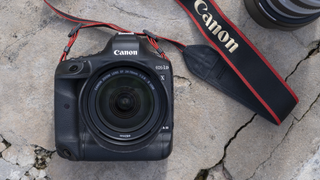
Specifications
Reasons to buy
Reasons to avoid
✅ You want quick autofocus: 'Deep learning' autofocus stays one step ahead to deliver fast results.
✅ You need a sturdy build: With size comes an incredibly well built and sturdy body that can handle tough conditions.
❌ You have a limited budget: There's no getting away from it, the 1D X Mark III is one of the priciest DSLRs around.
❌ You shoot in tight spots: With no tilting viewfinder you' might find yourself struggling to see what you're shooting.
The Canon EOS 1D X III is the company's flagship DSLR, a camera typically seen in the hands of professional action photographers at big events. It's a substantial and rugged bit of kit, designed for speed and to withstand harsh conditions. They don't come tougher than this. You'll be able to rattle off 20.1MP still images at a rate of 16fps until the memory card fills up. Truly, there is no limit to the camera's performance for action, and it is backed up by a staggering battery life of nearly 3,000 shots (which in real use for continuous shooting is much higher, too). Subject-tracking autofocus performance is also simply jaw-dropping.
But this isn't just an action camera – the EOS 1D X III is a brilliant video tool too, with 5.5K RAW 10-bit video up to 60fps. Beware; you'll need to save up for a handful of expensive CFexpress cards because those video files are huge. Unlike other competing DSLRs, Canon's Dual Pixel AF works exceptionally well in Live View, where you virtually get equal AF performance as when you're using the bright optical viewfinder. The only real downside is that there has been a price hike in this third 1D X installment.
- Read our in-depth Canon EOS 1D X Mark III review
The best professional camera for most pros
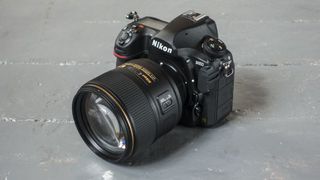
Specifications
Reasons to buy
Reasons to avoid
✅ You need unbeatable battery life: With the ability to shoot 1,840 images per charge this camera won't let you down
✅ You shoot in bright light: The large and bright viewfinder helps you see what you're shooting on sunny days.
❌ You use live view focusing: The D850's speed in this area leaves a lot to be desired and makes it hard to rely on.
❌ You rely on wireless image transfer: SnapBridge makes it possible to do this but it is annoyingly slow at times.
If you're a DSLR fan who can't quite bring yourself to buy a mirrorless camera just yet, then the Nikon D850 would be our pick. Armed with a 45.4MP sensor and class-leading image quality at its base ISO 64, the D850 is particularly suitable for landscape photography. You'll also enjoy the proven autofocus system borrowed from the action-focused Nikon D5, which will happily handle more demanding scenarios such as weddings and even action photography, too.
Build wise, the camera is practically bomb-proof, and enjoys comprehensive weather-sealing, a significant battery life, and a wonderfully large and bright optical viewfinder. This is a camera that you can simply rely on. When you consider the system as a whole, DSLR tech is a lot cheaper than mirrorless rivals too, with like-for-like lenses typically two thirds of the price. The clear drawback to a Nikon DSLR compared to mirrorless rivals is video performance. While you can still shoot lovely looking 4K videos, Live View autofocus is sluggish at best and there is no in-body stabilization. Also, this isn't a true action camera, with a 7fps continuous shooting limited to sequences around 50 shots.
- Read our in-depth Nikon D850 review
The best professional camera for video on a budget
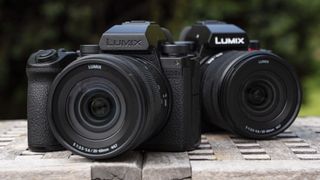
Specifications
Reasons to buy
Reasons to avoid
✅ You only shoot video: With a 24MP sensor, image stabilization, and phase-detection AF you'll have everything you need to shoot great video.
✅ You need a 3:2 aspect ration: The Lumix S5 II delivers both 16:9 and full sensor area recording at an aspect ration of 3:2.
❌ You shoot a lot of slow mo: Panasonic introduces 1 1.5x crop restriction if you're wanting to drop frame rates at 4K.
❌ You are primarily a photographer: Almost everything good about this camera is video focused so look elsewhere if you hardly shoot any video.
At $1,999 / £1,999 / AU$2,989, the Panasonic Lumix S5 II is one of the best full-frame mirrorless cameras that delivers incredible video quality. The 24MP sensor produces up to 6K resolution at 30p with all video options available in an amazing 10-bit. One of the standout features when we reviewed it was the ability to record from the full sensor area which provides a beautiful 3:2 aspect ratio. Other cameras provide alternative cropping options but more often than not they are just a crop of the 16:9 video and therefore pixels are lost. Having the flexibility to move away from a 16:9 crop gives greater flexibility to filmmakers who want their films to look a little different from the get go.
We were also very impressed by Panasonic's image stabilization especially when it comes to run-and-gun filmmaking. Hand-held video is increasingly common but some cameras struggle to produce sharp photos and smooth video clips with this type of filming. The Lumix S5 II has no such problems, delivering amazing quality even under the most extreme scenarios. The excellent image stabilization is paired with phase-detection AF for video which is far superior than the contrast-detection that is more commonly used in Panasonic's previous cameras. If you need a video camera at a great price then look no further than the Lumix S5 II.
- Read our in-depth Panasonic Lumix S5 II review
The best professional camera medium format
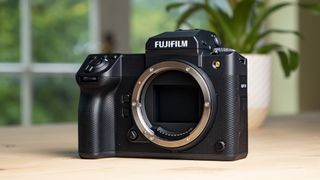
Specifications
Reasons to buy
Reasons to avoid
✅ You're a hybrid shooter: You won't find a better camera on the market that delivers both amazing photo and video quality.
✅ You want a modular medium-format: Compatibility with a vertical grip provides extra battery life for long shoots.
❌ You don't need detail: 102MP photos and 8K video isn't for everyone. If you don't need this level of resolution then there are capable cheaper alternatives.
❌ You want classic Fujifilm design: The brutalist GFX100 II moves away from the retro design that many Fujifilm users love.
We love the Fujifilm GFX100 II. Our hands on review found it to be "the most powerful, responsive, and versatile medium-format mirrorless camera available." Medium-format cameras have gained a bit of a bad reputation for offering slow performance, but that couldn't be further from the truth with the GFX100 II. It is quicker than any other GFX camera and delivers the same kind of speed as other full-frame cameras, including the Sony A7R V and the Fujifilm X-T5.
There is also no reduction in quality, thanks to the 102MP sensor at a rate of 8fps and reliable subject detection autofocus that guarantees great results. As well as being a very capable medium-format stills camera, the GFX100 II is also equally at home in the video realm. 8K at 30p video with ProRes raw recording, LUT color profiles, and a range of aspect ratios gives videographers everything they need to produce great looking video. If you're happy parting with a small fortune, then you'll get one of the best medium-format cameras on the market at the moment.
- Read our in-depth Fujifilm GFX100 II review
The best professional camera photo quality
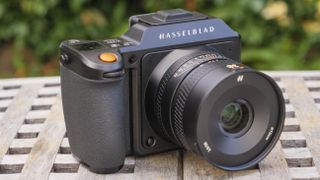
Specifications
Reasons to buy
Reasons to avoid
✅ You shoot portrait with a flash: The X2D is one of the few cameras to provide this functionality.
✅ You need great color replication: All 100MP look great thanks for the wide dynamic range and excellent color rendition.
❌ You want to shoot video: The XCD, quite simply, has no video recording capabilities. It is a purist option for photographers.
❌ You value autofocus speed: There's no getting away from it, the XCD autofocus is outperformed but decade old DSLRs.
The Hasselblad X2D 100C is unapologetically a purist’s camera. It can’t record video, burst rates max out at just 3.3fps and, while notably faster than previous models, autofocus still struggles. Yet the X2D is also the most versatile Hasselblad to date. We found it comfortable in the hand and surprisingly wieldy for a medium format model. Its tilt-screen design benefits from excellent touch response, while 1TB of built-in SSD storage kept our minds off memory cards. Plus it benefits from a first for Hasselblad: in-body image stabilization, executed so well that we didn’t need a tripod.
As you’d expect from a 100MP sensor, it can produce razor-sharp stills in a range of scenarios. But where the X2D really excels is flash portraiture. By incorporating the mechanical shutter into its XCD lenses, Hasselblad both reduces vibrations and allows flash sync at any shutter speed. This unlocks easier and more creative use of wide apertures. Add the X2D’s outstanding color rendition and dynamic range into the mix and you’ve got one of our favorite medium format cameras.
- Read our in-depth Hasselblad X2D 100C review
The best professional camera for journalists
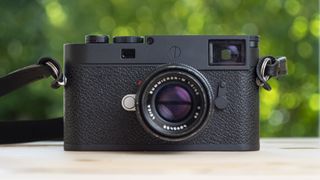
10. Leica M11-P
Specifications
Reasons to buy
Reasons to avoid
✅ You're a journalist: Content-credentials are attached to images at the point of capture for unquestionable authentication.
✅ You love the rangefinder experience: The only rangefinder in this professional camera buying guide provides a slow and measured focusing practice that many love.
❌ You need autofocus: There's nothing electronic here. Both the focus and aperture are set manually on the lens.
❌ You're a videographer: With no video functionality, the M11-P is only for photographers.
In a world of ever-better artificial intelligence, it is becoming increasingly important for photographers, including journalists, to be able to prove they were the ones to take a photo. That's where the Leica M11-P steps in, as the world's first 'anti-AI' camera that is capable of verifying the authenticity of digital images at the point of shooting, courtesy of a dedicated internal chip that can add a digital signature. This is all done through content-credentials, an industry standard that, provides all the necessary assurances. These credentials not only verify standard metadata such as the time, date, camera, and settings used (as in most cameras), but also any edits made post-capture.
With no video capabilities, the M11-P is most definitely a stills camera and a fine one at that with superb 61MP full-frame sensor. It's gorgeous matt black body provides a signature finish. Alongside this, Leica has included a sapphire glass display that is scratch-resistant, an essential feature for keeping your camera looking great for many years to come.
The best professional camera for computational modes
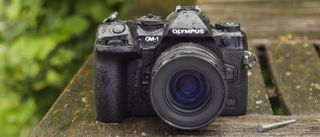
Specifications
Reasons to buy
Reasons to avoid
✅ You rely on Autofocus: Subject detection with eye-detection autofocus now extends to birds, animals and people.
✅ You need lightweight: Micro Four Thirds lens are usually half the size, weight and price of their full-frame counterparts.
❌ You need high resolution: 22.9MP resolution is seriously limited compared to other flagship cameras, even at this price point.
❌ You shoot in low-light: The OM-1 lacks performance quality when shooting in challenging lighting conditions.
The OM-1 is the flagship model in a new mirrorless camera series from OM Digital. It benefits from a long line of Olympus cameras with excellent performance. Our hands-on review found it a joy to shoot with, and it doesn't take long to figure out why. The camera comes with the first ever stacked Micro Four Thirds CMOS sensor, which is surprisingly quick in terms of readout speeds and autofocus. The sensor is limited to 22.9 MP, so if you need higher resolution imagery, you'll need to look elsewhere.
The area where the OM-1 really shines is when it comes to computational modes. These are super common in smart phones but are becoming increasingly common in all types of cameras now. In essence, they decode captured images to produce a new type of image that is superior in some way. The OM-1 offers a range of modes, including High Res Shot, Live ND, Focus Stacking, HDR and Multiple Exposure. The first of these, for example, increases resolution from the meagre 22.9 MP all the way up to 80 MP. If you are happy with a significant amount of post-processing to be done for you, then the MO-1 will be right up your street.
It has been superceded by the OM-1 II now, but that camera has virtually identical hardware and represents a tiny refresh with firmware-update level improvements, and as the newer model is much pricier, so the OM-1 remains here for now.
- Read our in-depth OM System OM-1 review
The best professional camera value 6k video camera
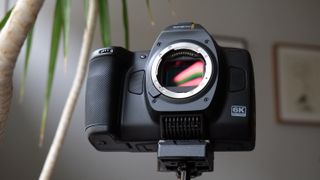
Specifications
Reasons to buy
Reasons to avoid
✅ You want cinema quality footage: Blackmagic’s 12-bit codec and color workflow are perfect for creating unbelievably good quality.
✅ You shoot video in low-light: The full-frame sensor and dual native ISO helps to keep image noise to a minimum.
❌ You want run and gun: With a lens, ND filters, and microphone attached, the overall weight is quite heavy.
❌ You are a photographer: This camera is, unashamedly, a video camera. Photography features are at a real minimum.
Blackmagic has decided to remove the 'Pocket' descriptor from its range of high-quality cinema cameras, despite there being no changes to the overall size. A first for this range is the inclusion of a full-frame sensor, which delivers amazing low-light performance and 6K video recording up to 60fps. It isn't the cheapest video camera, but for the specifications, it'll be hard to find anything better.
Despite not coming with any built-in ND filters or top-of-the range slow mo options, we do really love the video quality. Footage is captured in 12-bit, providing a huge dynamic range that makes it possible to make wide-ranging and extreme edits in post. The potential for cinematic quality is what sets this camera apart. Most filmmakers will put up with any shortcomings here if they know that what they're able to create is going to look amazing.
- Read our in-depth Blackmagic Cinema Camera 6K review
How to choose the best professional camera
How to choose the best professional camera
Here are five things to look out for:
1. Build quality
Needless to say, life alongside a pro is rarely dull. Exposed to inclement weather, being thrown around the place and rattling through thousands of pictures, your camera will be taken through its paces and will need to stand up to the challenge. Ideally, the camera body will be both weather-sealed and made from hard-wearing metal.
2. Real-world performance
Sometimes you'll need to look beyond the spec sheet and into real world experience. One example, 20fps continuous shooting might sound impressive for action, but if the camera slows up after a second, that mode is of no real use. Or is that the electronic shutter affected by banding? A true pro camera for action should just keep going without slowing up.
3. Lens choice
Sometimes we can get so drawn into what the camera can do, while forgetting that it is part of an interchangeable lens system. Lens quality and choice is just about as important as the camera itself. Even within this roundup, the camera systems vary in age and therefore breadth. Does the system offer the lens you want?
4. Listen to other pros
The feel in the hand, the control layout, potential customization, reliability, the little features that don't make the headlines. It's worthwhile reading up what other pros have enjoyed about the camera you are interested in, because they have that real-world experience. Sometimes it's the little things that make all the difference with the camera that you intend to rely on.
5. Accessories
Memory cards, additional batteries, grips, supports, audio, wireless transmitters, lighting. The list goes on. Not all pros are made of money and the camera is only your initial outlay. The best option might not be what camera you can afford, but building a system within your budget. For example, new memory card types can be particularly expensive.
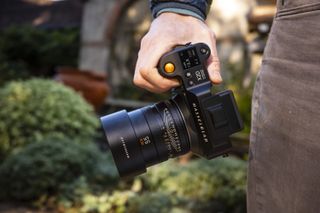
How we test professional cameras
Buying a professional camera is going to set you back a fair amount of money, so we understand you'll want to do your research and make as informed a decision as possible. That's why we perform hands-on tests of all of our cameras, putting them through their paces and making verdicts based on our experience.
In our testing, we begin by looking at the camera's design and handling to get an idea of it's size, weight, and what type of photography or videography it is ideally suited for. In terms of performance, we use a formatted SD card and take a range of photos and videos to see how good it is in a range of scenarios, including low-light. Transferring these photos onto a computer gives our reviewers the opportunity to look at the results in more detail, zooming in on specific parts of images, to see what detail is captured.
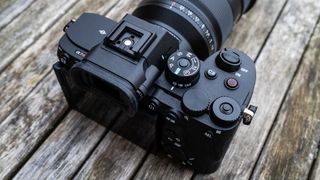
When it comes to video specifically, we make sure we test all the core features, including autofocus, stabilization, and audio options, as well as the video quality of the footage. Video quality is tested by filming a range of different scenarios, including handheld and locked-off, across all the available resolutions. Footage is then checked to see how the camera managed in terms of autofocus image stabilization.
If a camera specifically provides 8-bit or more recording capabilities, then we also like to color grade the footage to see how far we can push it. These tests are also carried out in a range of lighting conditions to see how the sensor copes with a wide dynamic range of data.
With all of the tests complete across photo and video, we compare them with their competitors and draw informed conclusions about the quality of the cameras and who they might appeal to.
- Best DSLR camera: 12 of the best DSLR cameras for all budgets
Get daily insight, inspiration and deals in your inbox
Get the hottest deals available in your inbox plus news, reviews, opinion, analysis and more from the TechRadar team.

Tim is the Cameras editor at TechRadar. He has enjoyed more than 15 years in the photo video industry with most of those in the world of tech journalism. During his time as Deputy Technical Editor with Amateur Photographer, as a freelancer and consequently editor at Tech Radar, Tim has developed a deeply technical knowledge and practical experience with cameras, educating others through news, reviews and features. He’s also worked in video production for Studio 44 with clients including Canon, and volunteers his spare time to consult a non-profit, diverse stories team based in Nairobi. Tim is curious, a keen creative, avid footballer and runner, and moderate flat white drinker who has lived in Kenya and believes we have much to enjoy and learn from each other.
